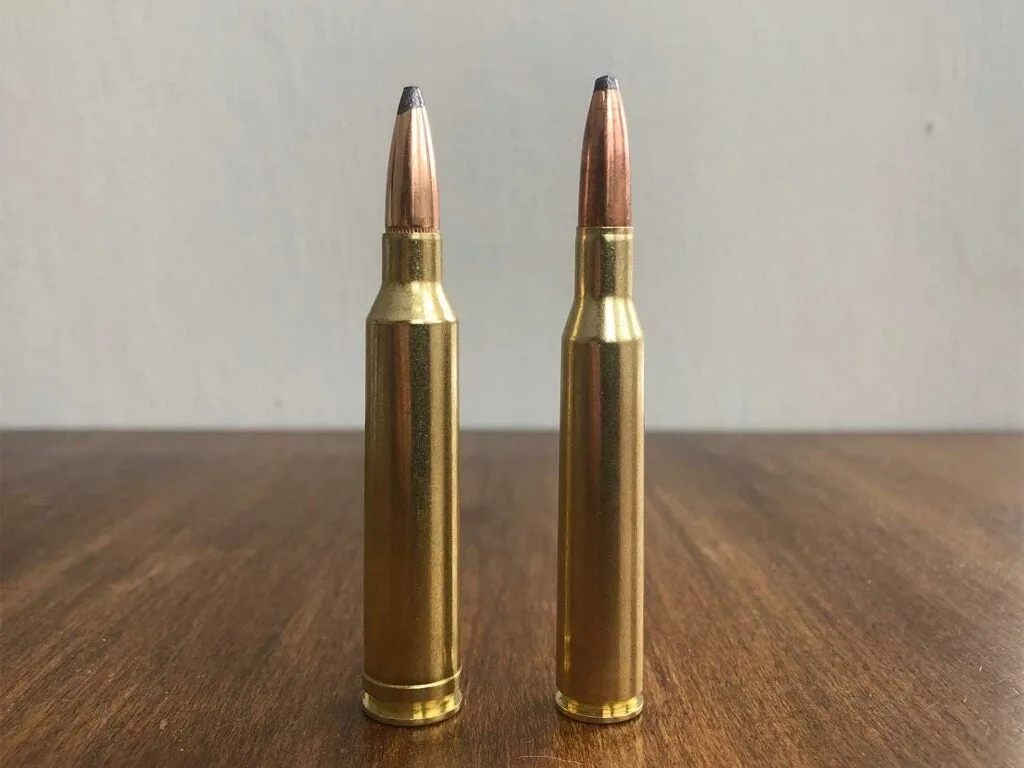When it comes to big game hunting, selecting the right cartridge can make a significant difference in terms of performance and hunting success. Among the wide array of options available, the .270 Winchester and the 7mm Remington Magnum are two popular choices that often come up for comparison. Both cartridges have their own unique set of characteristics that make them suitable for various hunting scenarios. This article aims to provide a detailed analysis of these two cartridges by exploring their history, performance metrics, and how they stack up in terms of accuracy and recoil.
Introduction to 270 and 7mm Rem Mag Cartridges

The .270 Winchester, introduced in 1925, has long been celebrated for its efficacy in hunting medium to large game. Developed by Winchester Repeating Arms Company, the cartridge was designed with the intention of providing a flat-shooting, high-velocity option that would be suitable across diverse hunting conditions. Over the decades, the .270 Winchester has garnered a loyal following among hunters and sports shooters due to its versatility and reliable performance. Its reputation as a “do-it-all” cartridge underpins its enduring popularity.
In contrast, the 7mm Remington Magnum was introduced in 1962, offering a more modern take on big game cartridges. Developed by Remington Arms, this cartridge quickly gained traction for its higher velocity and energy levels compared to older cartridges like the .30-06 Springfield. The 7mm Rem Mag was designed to provide greater long-range performance, making it a suitable choice for hunters who pursue game across expansive terrains. Its adoption was further bolstered by the increasing popularity of long-range shooting sports.
Both cartridges have unique lineages and purposes, yet they serve similar applications in the world of hunting. The .270 Winchester is often praised for its manageable recoil and sufficient power for North American game. Meanwhile, the 7mm Rem Mag shines in scenarios where long-range precision and stopping power are paramount. Understanding these cartridges’ historical contexts helps frame the ongoing debate about their respective merits and applications.
Performance Metrics: Velocity and Trajectory
When evaluating performance metrics such as velocity and trajectory, both the .270 Winchester and the 7mm Remington Magnum offer impressive figures, albeit with some differences. The .270 Winchester typically fires a 130-grain bullet at approximately 3,060 feet per second, offering a flat trajectory that’s well-suited for medium-range shooting. This high velocity ensures that the bullet can maintain energy over considerable distances, making it a versatile option for hunters targeting game from varying ranges.
On the other hand, the 7mm Remington Magnum is known for its superior velocity and energy. A standard 150-grain bullet in this caliber might clock in at around 3,100 feet per second, providing a notably flatter trajectory and better long-range performance compared to the .270 Winchester. This advantage in velocity translates to less bullet drop at extended distances, allowing for more precise shots across longer ranges. The added energy also ensures ample penetration and stopping power on larger game.
Despite the higher velocity of the 7mm Rem Mag, the .270 Winchester remains competitive, particularly for hunters who prioritize a balance between recoil and ballistic performance. The trajectory of the .270 might not be as flat as the 7mm at extreme ranges, but for most practical hunting scenarios, its capability remains more than sufficient. Ultimately, the choice between these two cartridges often depends on the specific hunting environment and the personal preferences of the shooter.
Evaluating Accuracy and Recoil Differences

Accuracy is a critical factor for hunters and target shooters alike, and both the .270 Winchester and 7mm Remington Magnum have established reputations for precision. The .270 Winchester, with its moderate recoil and stable flight path, offers excellent accuracy for most hunting applications. Many hunters appreciate its ability to deliver consistent groups at medium ranges, which is often where big game encounters occur. The manageable recoil of the .270 Winchester also contributes to improved shooter comfort and accuracy, allowing for quicker follow-up shots if necessary.
The 7mm Remington Magnum, with its enhanced long-range capabilities, is also known for its accuracy. Its flatter trajectory and higher ballistic coefficient can provide tighter shot groups at extended distances, which is especially valuable for long-range hunting and shooting competitions. However, the increased recoil of the 7mm Rem Mag may affect accuracy for some shooters, particularly those who are less experienced or sensitive to recoil. This factor is important to consider when selecting a cartridge, as comfort and confidence with a firearm play significant roles in shooting accuracy.
Ultimately, the choice between the .270 Winchester and the 7mm Remington Magnum in terms of accuracy and recoil comes down to the intended use and the shooter’s ability to handle recoil. For those who prioritize manageable recoil and sufficient accuracy within typical hunting ranges, the .270 Winchester is a solid choice. Conversely, for those seeking superior performance at longer distances and are comfortable with more substantial recoil, the 7mm Rem Mag stands out as a formidable option.
In conclusion, both the .270 Winchester and the 7mm Remington Magnum present compelling choices for hunters and marksmen, each with unique strengths that cater to different needs and preferences. The .270 Winchester provides a balanced approach with its moderate recoil and versatility across a variety of hunting scenarios, while the 7mm Remington Magnum excels in long-range performance with its higher velocity and energy output. Understanding the nuances of each cartridge’s performance in velocity, trajectory, accuracy, and recoil will help shooters make informed decisions tailored to their specific hunting or shooting needs. Ultimately, the best choice is the one that aligns with the shooter’s specific requirements and proficiency, ensuring a successful and enjoyable experience in the field.



